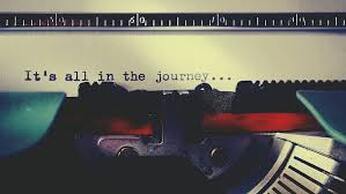
Thank you to 24 Carrot Writing for asking me to blog for them today. It’s a pleasure to be here talking about one of my favorite things: The Query Letter. A bit of background: It’s no secret that I’d queried a lot in the early 2010s (I’ve written about it in a bunch of places -- Articles about Querying and Writing - Query Godmother). After a few false starts, I signed with my third agent in the summer of 2013. This past summer, after seven years with the same agent, we parted ways—and I was honestly feeling like a bit of a failure. I’d been hoping for feedback on a manuscript and wasn’t prepared for my agent to be downsizing their list. In the middle of 2020, I took it really hard. All this to say that anyone can be in the query trenches. Writing a query can be scary. Remember, a query letter is a tool. It’s a way to put your words into the world. Don’t overthink the query letter. It’s manageable. There are parts to it. 1. Introduction (and opening paragraph): Sometimes this is called the “hook” part of the query. Include the title, the word count, the target age, and the genre of the book. A short tagline (elevator pitch) can be included in this section as well. It is not mandatory, though. If you have something personal to add, like that you met the agent at a conference, or took their workshop, do that here. If you don’t have anything personal, don’t force it. 2. Book section: Think of this as your back cover copy. This is the most important part of the query. Be specific, but brief. Try to express how your book is different than others. Use specificity about character goals, stakes, and motivations. This section should be the longest—after all the query is about your BOOK. Make sure you are answering these questions in this section:
Something about yourself and your expertise. What makes you the person to write this book? If you have any relevant published works, mention them here. Keep this part business. Don’t include things about your family or hobbies. Query strategies:
I’ll be honest, I have yet to sign with a new agent. However, my request rate is over 20%, so I feel like my query letter is working, and there are several people considering my work. Keep track of this sort of data, so you know when to revise and/or move to the next manuscript. Jumping into the querying pool can help you put aside your fears and anxieties about your work. Querying is forward motion. It is taking control of your career. Know yourself and what works for you. I wish you all good luck in 2021.  Bio: Kristine Asselin is the author of several works of children’s nonfiction, co-author of the middle grade novel The Art of The Swap, as well as the YA novels Any Way You Slice It and Falling for Wonder Boy. She loves being a Girl Scout leader and volunteering with the Society of Children’s Book Writers and Illustrators. She is a sucker for a good love song (preferably from the 80s), and can’t resist an invitation for Chinese food or ice cream (but not at the same time!). She lives in Central Massachusetts with her teen daughter and husband, and spends part of everyday looking for a TARDIS to borrow.
1 Comment
3/31/2021 05:49:17 pm
I really liked this blog by Kris. I am familiar with her Hook, Book, Cook guidelines and use them. But, what struck me is that, as successful as she is, even she has to find new agents. It gives me hope knowing that this business is hard for EVERYONE. We all have our challenges. Thank you, Kris!
Reply
Leave a Reply. |
Peruse blogs for advice and tips from KidLit creatives.
Categories
All
Archives
April 2024
Click to set custom HTML
Click on the RSS Feed button above to receive notifications of new posts on this blog.
|
 RSS Feed
RSS Feed